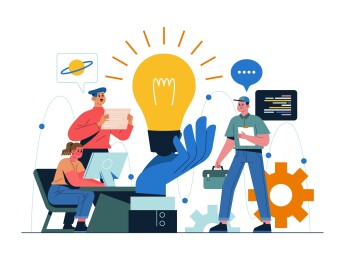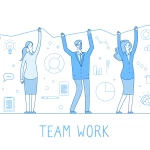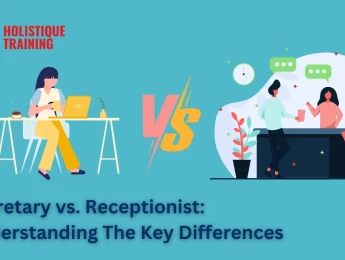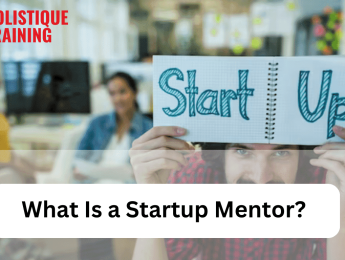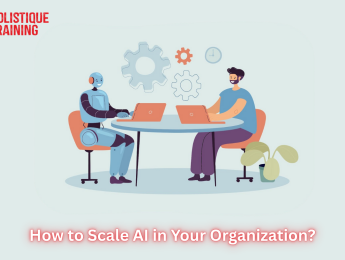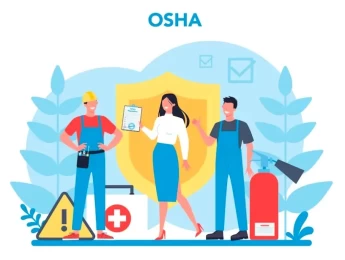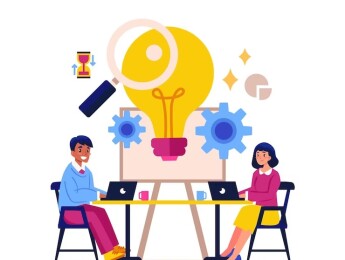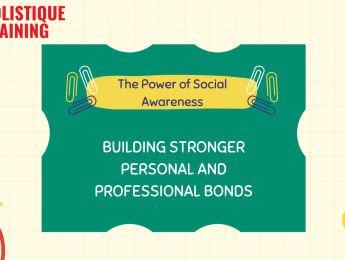- Table of Contents
- Introduction
- What Is Innovation?
- Benefits of Innovation
- Competitive Advantage
- Increased Efficiency
- Enhanced Employee Engagement
- Adaptability to Change
- Improved Customer Experience
- Sustainability and Social Impact
- Economic Growth and Job Creation
- Do Team Competitions Help with Innovation?
- Encourages Collaboration
- Stimulates Creativity
- Promotes Risk-Taking
- Provides Recognition and Rewards
- Builds a Culture of Innovation
- Cultivating Innovation Champions
- Innovative Approaches in the Workplace
- 1. Innovation Workshops
- 2. Hackathons and Idea Jams
- 3. Cross-Functional Collaboration
- 4. Innovation Challenges
- 5. Design Thinking Sessions
- Challenges of Fostering Innovation in the Workplace
- 1. Resistance to Change
- 2. Lack of Resources
- 3. Absence of a Supportive Ecosystem
- 4. Fear of Failure
- 5. Lack of Alignment with Organisational Goals
- Conclusion
Introduction
Innovation is the lifeblood of progress and growth in the modern workplace. The ability to think creatively, challenge existing norms, and introduce novel solutions propel organisations forward in today's rapidly evolving world. In this blog post, we will explore the concept of innovation, delve into its numerous benefits, and discuss the role of team competitions in fostering an innovative work culture.
What Is Innovation?
Innovation refers to the process of introducing new ideas, methods, or products that bring about positive change. It involves a combination of creativity, problem-solving, and risk-taking to develop breakthrough solutions. Innovation can manifest in various forms, such as technological advancements, process improvements, business models, or even organisational cultural shifts. It is driven by a mindset that embraces change, encourages experimentation, and values continuous learning.
Benefits of Innovation
Innovation isn’t just a buzzword; it's a transformative force that redefines the very fabric of organisations, endowing them with numerous advantages in today’s competitive landscape. Let’s delve into the multifaceted benefits of innovation, understanding how it acts as a catalyst for organisational growth and prosperity:
Competitive Advantage
In the cutthroat business world, standing out is essential. Innovative organisations have a significant advantage—they can offer unique products or services that cater to evolving customer needs. This distinctiveness becomes a magnet for customers, setting the innovative business apart from its competitors. A classic example is Apple Inc., renowned for its groundbreaking products like the iPhone. This company showcases how innovation can redefine entire industries and create unparalleled market dominance.
Increased Efficiency
Innovation isn't limited to flashy new products; it also permeates organisational processes. Through innovative thinking, businesses can optimise workflows, identify bottlenecks, and eliminate redundancies. By leveraging technology and creative problem-solving, companies streamline operations, enhancing productivity and efficiency. For instance, automation in manufacturing processes reduces human errors and accelerates production, saving both time and resources.
Enhanced Employee Engagement
A workplace that fosters innovation nurtures a sense of purpose among employees. When their ideas are valued, employees feel more engaged and motivated. This engagement is crucial because engaged employees are more likely to invest their best efforts in their work. They become advocates for the company, sharing its innovative spirit with customers and partners. As a result, innovation boosts employee morale and creates a positive work environment where creativity flourishes.
Adaptability to Change
The business landscape is tumultuous, marked by rapid changes and unpredictable shifts. Organisations equipped with a culture of innovation are not just prepared for change; they thrive in it. Innovations enable companies to adapt swiftly, identifying emerging trends and customer preferences. Such adaptability ensures businesses can pivot their strategies and offerings in response to market dynamics, ensuring longevity and relevance.
Improved Customer Experience
Innovation allows organisations to develop products or services that better meet customer demands. By understanding customer pain points, providing innovative solutions, and collaborating with customers during innovation, businesses can enhance the overall customer experience and build long-lasting relationships. In fact, letting customers in during the innovation process is considered of utmost importance that a majority of high-growth companies (65%) expressed their intention to involve customers in the innovation process, in a study conducted by Accenture.
Sustainability and Social Impact
Innovation isn't solely about profits; it's also about creating a sustainable future. Many organisations now focus on eco-friendly innovations, developing products and processes that reduce their environmental footprint. Additionally, innovation plays a pivotal role in addressing societal challenges. For instance, innovations in healthcare, such as telemedicine and wearable devices, enhance accessibility to medical services, especially in remote areas, thereby contributing significantly to public welfare.
Economic Growth and Job Creation
Innovation benefits individual organisations and fuels economic growth on a broader scale. Innovative companies often become economic powerhouses, creating jobs and stimulating local economies. Start-ups, particularly in the tech industry, are prime examples of how innovation creates jobs and attracts investments, fostering economic prosperity in regions that embrace innovative initiatives.
In summary, innovation's benefits are far-reaching, touching every facet of an organisation and society at large. By cultivating a culture that encourages and rewards innovation, businesses secure their position in the market and contribute significantly to the advancement of industries and the betterment of society. Innovation isn’t just a means to an end; it's a journey that leads to continuous growth, empowerment, and the creation of a better tomorrow for everyone.
Do Team Competitions Help with Innovation?
Team competitions serve as dynamic catalysts in the innovation ecosystem of modern workplaces. These competitions play a pivotal role in shaping an organisation's innovative prowess by fostering collaboration, stimulating creativity, promoting risk-taking, providing recognition, and building a culture of innovation. A recent study conducted by Prodoscore revealed that over 50% of employees in the United States believe that workplace competition is a driving force, inspiring them to enhance their job performance. Let’s now explore how these competitions are instrumental in unlocking the collective creativity of teams and driving innovation to new heights.
Encourages Collaboration
Team competitions are arenas where the boundaries between departments and hierarchies blur. In these spirited environments, employees from various divisions collaborate intensively, exchanging ideas and expertise. This cross-pollination of perspectives and skills often leads to ingenious problem-solving. Engineers brainstorm with marketers; designers collaborate with developers. Such diverse collaboration generates a synergy where the sum is greater than its parts, resulting in innovative solutions that seamlessly merge multiple disciplines.
Stimulates Creativity
Competition kindles the flames of creativity. When teams compete, there’s an inherent drive to outshine competitors, prompting participants to think beyond conventional boundaries. In the quest for victory, individuals explore uncharted territories of their creativity, ideating novel and disruptive solutions. Brainstorming sessions become vibrant arenas of ideas, with participants proposing innovative concepts that might have remained unexplored in a less competitive setting. This influx of creative energy often leads to breakthrough innovations that can redefine products, services, or even entire business models.
Promotes Risk-Taking
In the safety of a competitive environment, employees are more willing to take risks. The fear of failure is overshadowed by the desire to win. This fearlessness paves the way for experimentation, where individuals and teams explore unconventional ideas and unconventional approaches. Some of the most groundbreaking innovations in history were born from risky experiments. Embracing failure as a natural part of the learning process encourages bolder and more daring attempts, leading to innovations that might have otherwise remained unexplored.
Provides Recognition and Rewards
Recognition is a powerful motivator. In team competitions, innovative contributions are not just acknowledged but celebrated. Public recognition, rewards, and accolades act as strong incentives for employees, reinforcing the value of their creative efforts. When innovative ideas are applauded, it sends a clear message: the organisation values and appreciates the innovative spirit. This recognition motivates the winning team and inspires others, creating a positive cycle where every employee is encouraged to contribute their innovative best.
Builds a Culture of Innovation
Regularly organising team competitions sends a resounding message across the organisation: innovation is not just encouraged; it is expected. When competitions become a regular part of the organisational culture, they instil a mindset where innovation is not an exception but a norm. Employees internalise the value of creative thinking, realising that their ideas have a platform for expression. This cultural shift goes beyond competition; it permeates everyday work, encouraging employees to think innovatively about routine tasks, projects, and collaborations.
Cultivating Innovation Champions
Team competitions also serve as platforms for identifying and nurturing innovation champions. These are individuals who not only contribute significantly to the competitions but also inspire and guide their teammates. Identifying such champions is essential, as they can play pivotal roles in driving innovation in other areas of the organisation. By recognising and grooming these individuals, organisations ensure a continuous influx of innovative ideas, creating a sustainable culture of innovation that evolves with time.
In short, team competitions are not just events; they are transformative experiences that tap into the collective creativity of employees. By encouraging collaboration, stimulating creativity, promoting risk-taking, providing recognition, and building a culture of innovation, these competitions empower employees to think beyond boundaries, fostering an environment where groundbreaking ideas flourish. Team competitions, thus, stand as indispensable tools in the hands of organisations, propelling them into the future of innovation and ensuring that creativity knows no limits within their walls.
Innovative Approaches in the Workplace
In the quest for innovation, organisations are increasingly exploring diverse strategies and techniques to foster creativity, harness the collective intellect of their workforce, and drive transformative change. Beyond conventional methods, innovative approaches in the workplace are shaping the future of businesses, enabling them to stay ahead in an ever-evolving market. Let’s delve into some of these innovative approaches and understand how they cultivate a culture of creative excellence.
1. Innovation Workshops
Innovation workshops are structured sessions designed to ignite the spark of creativity among employees. These workshops often involve brainstorming sessions, interactive activities, and guided discussions led by expert facilitators. By providing a designated space and time for creativity, innovation workshops encourage employees to think beyond the ordinary. Expert facilitators introduce diverse problem-solving techniques and creative thinking methodologies, empowering employees to explore unconventional ideas. These workshops' structured yet open-ended nature allows participants to challenge existing norms, fostering an environment where innovative ideas can flourish.
2. Hackathons and Idea Jams
Hackathons and idea jams are time-bound events that challenge participants to solve specific problems or generate innovative solutions within a limited timeframe, ranging from a few hours to a few days. These events' competitive and time-constrained nature serves as a pressure cooker for creativity. Participants collaborate intensively, leveraging their unique skills and perspectives to devise innovative solutions. The urgency of the timeline forces participants to think on their feet, encouraging out-of-the-box thinking and rapid prototyping. These events yield immediate innovative results and cultivate a mindset of agility and quick thinking among employees, which proves invaluable in the fast-paced business world.
3. Cross-Functional Collaboration
Innovation often thrives at the intersection of diverse fields and expertise. Cross-functional collaboration encourages employees from different departments or disciplines to collaborate on projects and initiatives. By breaking down silos and promoting interdisciplinary teamwork, organisations create a melting pot of ideas. Engineers collaborate with marketers, designers work alongside data analysts, and customer support teams exchange insights with product developers. This convergence of diverse skills and perspectives often leads to holistic and innovative solutions that address challenges comprehensively. Cross-functional collaboration fosters an environment where varied viewpoints are valued, encouraging employees to step into unfamiliar territory and contribute meaningfully to innovative endeavours.
Collaboration Type | Benefits | Examples |
Marketing + Engineering | Enhanced Product Messaging | Collaborative Product Launch Campaigns |
Design + Data Analysis | User-Centric Design Solutions | Data-Driven UX Improvements |
Sales + Customer Support | Improved Customer Retention Strategies | Joint Customer Feedback Analysis |
Research + Development | Pioneering Technological Advancements | Breakthrough Product Development Initiatives |
Operations + Human Resources | Streamlined Employee Onboarding Processes | Optimised Workforce Management Strategies |
Table 1: Types & benefits of cross-functional collaboration
4. Innovation Challenges
Innovation challenges are structured initiatives where employees are encouraged to pitch innovative ideas or work on projects outside their regular scope of work. These challenges empower employees to act as intrapreneurs—entrepreneurial individuals within an organisation who drive innovative projects forward. Organisations nurture a culture of intrapreneurship by providing resources, mentorship, and a platform for idea pitching. Employees are motivated to explore their passion projects, experiment with novel concepts, and take ownership of their innovative endeavours. Innovation challenges surface hidden talents within the workforce and foster a spirit of ownership and accountability, driving employees to pursue innovative initiatives with zeal and commitment.
5. Design Thinking Sessions
Design thinking is a human-centred approach to problem-solving that emphasises empathy, ideation, and prototyping. Design thinking sessions involve a structured process where teams empathise with end-users, define problem statements, ideate potential solutions, create prototypes, and gather feedback for iterative improvements. This iterative and user-focused approach ensures that innovations are technologically viable and resonate with users’ needs and preferences. Design thinking encourages teams to step into their customers' shoes, gaining profound insights into their pain points and aspirations. By empathetically addressing these needs, organisations create products and services that are not only innovative but also deeply impactful, fostering customer loyalty and satisfaction.
Incorporating these innovative approaches into the workplace doesn’t just yield immediate creative solutions; it transforms organisational culture. By nurturing a spirit of creativity, collaboration, and experimentation, these approaches ensure that innovation becomes an integral part of the organisational DNA. As employees engage in structured ideation, cross-functional collaborations, and empathetic problem-solving, they drive innovation within their organisations and inspire others to join the journey. These innovative approaches, therefore, serve as beacons guiding organisations toward a future where creativity knows no bounds and every challenge is an opportunity for groundbreaking innovation.
Challenges of Fostering Innovation in the Workplace
While the benefits of fostering innovation in the workplace are undeniable, organisations often encounter challenges on their innovation journey. Identifying and addressing these challenges is crucial to sustaining a culture of creativity and ensuring that innovative efforts yield meaningful results. Let’s explore some of the common challenges organisations face in fostering innovation and how they can navigate these roadblocks effectively.
1. Resistance to Change
One of the primary challenges in fostering innovation is the natural resistance to change. Employees accustomed to existing processes and routines might find embracing new ideas or methodologies challenging. Innovative leaders must actively communicate the vision behind the changes, highlighting the benefits for both the organisation and individual employees. Creating a supportive environment where employees feel heard and valued can help mitigate resistance, encouraging them to step out of their comfort zones and embrace innovative initiatives.
2. Lack of Resources
Limited resources, including budget constraints and time limitations, often hinder innovative projects. Organisations might struggle to allocate funds and time for experimentation, research, or training programmes that foster creativity. To address this challenge, leaders can explore partnerships with external organisations, tap into government grants or funding opportunities, and leverage open-source resources and collaborative platforms. Additionally, encouraging employees to invest their time in innovative pursuits during work hours can optimise existing resources, maximising the potential for creative endeavours.
3. Absence of a Supportive Ecosystem
A workplace culture that does not actively support innovation can stifle creative initiatives. Lack of recognition, inadequate support from leadership, and absence of idea-sharing platforms can discourage employees from contributing their innovative ideas. To combat this challenge, organisations should invest in creating an innovation-friendly environment. This includes implementing reward and recognition programmes for innovative contributions, which, according to a survey cited by Apollo Technical, is considered as the most significant factor in the workplace to 37% of employees. In addition, providing platforms for idea sharing and collaboration and ensuring that leadership actively champions and participates in innovative initiatives foster an innovation-friendly environment. A supportive ecosystem encourages employees and nurtures a sense of belonging and ownership, fostering a culture where innovation thrives.
4. Fear of Failure
Fear of failure is a significant barrier to innovation. Employees might hesitate to propose new ideas or take risks, fearing negative consequences in case of failure. Innovative leaders play a crucial role in changing the narrative around failure. By openly acknowledging that failure is a natural part of the innovation process and reframing it as a learning opportunity, leaders can create a culture where employees feel empowered to experiment and take risks. Celebrating successes and failures as valuable learning experiences helps build resilience and confidence among employees, encouraging them to persist in their innovative endeavours.
5. Lack of Alignment with Organisational Goals
Innovation initiatives must align with the overall strategic goals of the organisation. A common challenge arises when innovative projects operate in isolation, disconnected from the broader organisational objectives. To overcome this challenge, leaders should clearly communicate the organisation’s vision and goals, ensuring that innovative initiatives are designed to contribute meaningfully to these objectives. Regular strategic reviews and alignment meetings can help integrate innovation seamlessly into the organisational strategy, ensuring that creative efforts are directed towards achieving overarching business goals.
While fostering innovation in the workplace presents challenges, organisations can overcome these roadblocks with strategic planning, supportive leadership, and a commitment to a culture of creativity. Organisations can navigate challenges by addressing resistance to change, optimising available resources, building a supportive ecosystem, embracing failures, and aligning innovative initiatives with organisational goals. In the face of these challenges, innovative leaders and resilient employees can together create a workplace where innovation not only thrives but becomes an integral part of the organisational DNA, driving the organisation towards a future of endless possibilities and creative achievements.
Conclusion
Innovation is a critical ingredient for success in today's dynamic business landscape. It enables organisations to stay relevant, adapt to change, and drive growth. By nurturing a culture of innovation and leveraging the power of team competitions, companies can harness their workforce's collective creativity and expertise to generate groundbreaking ideas and solutions. Embracing innovation as a core value propels organisations towards a brighter and more prosperous future.
Innovation is not a one-time event but a continuous journey that requires commitment, open-mindedness, and a willingness to learn from both successes and failures. By fostering a culture of innovation, organisations can unlock their full potential and make meaningful contributions to their industries and society as a whole. Let us embrace innovation and create workplaces where imagination knows no bounds.
In this transformative journey of innovation, mastering the art of teamwork becomes paramount. Elevate your organisation's potential by enrolling in our course, ‘How to Build a Cohesive Team for Excellence,’ where we delve deep into the strategies that foster collaboration, creativity, and seamless teamwork. Unleash the power of unity and innovation, and watch your organisation soar to unparalleled heights. Don't just dream of a thriving workplace; enrol now and turn your aspirations into a reality. Let's craft a future where innovation and teamwork converge, creating a legacy of excellence!


